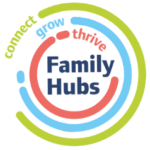Taking a positive approach to parenting will make all the difference to how children behave.
By taking a cup ‘half full’ approach, a decision has already been made to see the good in the situation. Parents and care givers need to always think about what they want their child to do.
Very often, when presented with something unwanted or negative, an assertive way to approach the situation is to address it directly.
For example, if your child is running in the hallway, a response could be:
- A request, such as – please stop running in the hallway.
- An instruction like – you need to stop running in the hallway.
Both of the responses above speak directly to what the child is doing and, in this context is referred to as a cup half empty response.
A cup half full response, when thinking about the same example, could be:
- A request, such as – please walk in the hallway.
- An instruction like – you need to walk in the hallway.
By providing clarity to what behaviour we want to see, we are more likely to get it. This is even more important when communicating with a child.
Generally speaking, children have limited reference points and life experiences to find alternative ways to behave. They may not have the acute problem-solving process in place to figure out what it required when we we tell them to ‘stop or don’t’ do something, especially when they are having fun doing it.
To remove all ambiguity, we can provide all the information needed by telling children what we what. This will ensure they can be successful in behaving in the way we would like.
Successful communication with children requires 2 other important points:
- Tone of voice
- Body Language
Thinking firstly about tone of voice. This is very important as the tone of voice used can at times solely emphasize meaning.
A negative address by an adult that shouts full force at a child would scare the child. Should this be coupled with a stance of close proximity towering over a child quickly, we can imagine how that might overbearing that would feel.
When seeking co-operation with children, whenever possible, adults should go down to the child’s level. By bending down, making eye contact, speaking clearly and warmly we communicate fully.
Take the Parent Challenge:
- Think now about how you give children instructions or request their co-operation.
- Try for the next 7 days to turn all cup ‘half empty’ comments into cup’ half full’ statements.
- Aim for all statements when addressing children to be positive.
- Give children lead time, when transitions will take place such as, ‘in the next 5mins’, or ‘after dinner’.
The parent challenge to not to use the word ‘don’t or stop’ in any statement, request or instruction:
| Negative – Half Empty | Positive – Half Full |
| Don’t run in the house
We don’t use bad language Stop hitting your brother I need you to stop crying |
Walk inside the house
Speak nicely Kind hands please Here is a hug, lets help you calm down |
There are instances where you could even use one word. Using the child running in the house example again, we could simply issue a one-word reminder, ‘walk’. The one-word reminder reinforced with a smile gives the child a positive alternative.
Remember, this simple change of perspective can work with the adults in our lives too. Ensure your cup is ‘half full’ by stating warmly what you want.
To find out how we can support your parenting and the courses and workshops we run visit our Parenting page.




